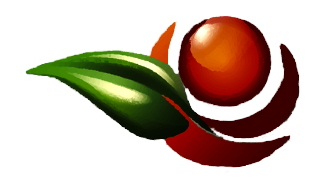What is a micro-market garden?
Discover microfarms: intelligent, environmentally-friendly agriculture
Organic vegetable micro-farms have gained in popularity in recent years, and rightly so! These small, human-scale farms, inspired by principles such as intensive organic market gardening, are revolutionizing our vision of modern agriculture. In this article, we'll explore in detail what a microfarm is and the basic principles that characterize it. Get ready to discover a new agricultural world, more respectful of the environment and public health!
What is a microfarm?
A microfarm is a small-scale farm, generally less than one hectare in size, dedicated to the intensive organic production of vegetables, fruit, herbs and/or flowers. Unlike traditional farms, microfarms take a holistic approach, emphasizing environmental sustainability, crop diversification, and territorial and social integration.
Bio-intensive market gardening and micro-farming
Intensive organic market gardening is the central pillar of microfarming. This is a method of cultivation that aims to maximize vegetable production on a small area using intensive techniques such as composting, mulching, crop associations and crop rotation. This approach delivers high yields without the need for chemicals or heavy mechanization.
Crop diversification: Microfarmers favour crop diversification over monoculture. By growing a variety of vegetables, fruits and herbs, microfarmers increase their farm's resilience to disease and pests, while promoting efficient use of natural resources.
Land, material and financial sparing: Microfarmers seek to optimize the use of available space, material and financial resources. Rather than investing heavily in expensive machinery, microfarmers favor hand tools and ingenious techniques to minimize their environmental and economic impact.
Spatial and temporal densification of production: Microfarms use intensive cultivation techniques to maximize production on a small area. They also use crop rotation and the strategic arrangement of plants to make the most of the available space throughout the year.
Territorial and social integration: Microfarms seek to integrate harmoniously into their local environment. They build strong links with their communities by selling their produce locally, promoting exchanges with other farmers and getting involved in social and environmental projects.
Agricultural renewal through micro-farms
Intensive organic vegetable micro-farms are more than just an agricultural trend - they represent a revolution in the world of farming. Guided by principles such as intensive organic market gardening and ecological intelligence, microfarms show that it is possible to farm in an environmentally-friendly yet economically viable way. By emphasizing crop diversification, judicious use of resources and an integrated approach within their communities, microfarms are paving the way for a new, more responsible and sustainable agricultural future. It's time to support and encourage the development of these small farms, as they represent hope for a better future that is more respectful of our planet.
To go further
Create your own market garden
Our training courses are like ready-made kits adapted to France (climate, laws, sales methods, organization). They are designed for market gardeners who want to improve their results, and also for those who have a project in mind.
An internship in small-scale market gardening
As a trainee, you'll be able to get involved in all stages of vegetable production, from seed preparation to tillage and fertilization.






